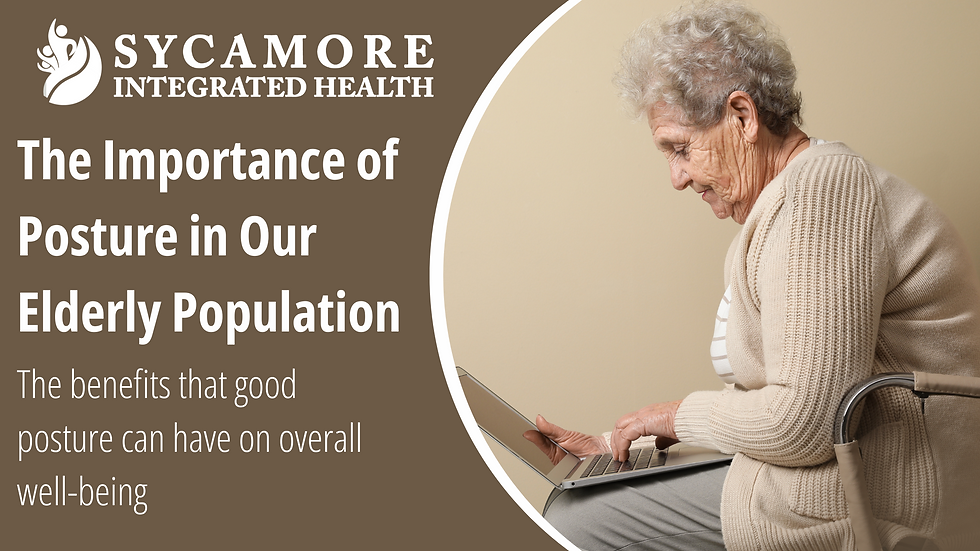How Walking Can Help Alleviate Your Low Back Pain
- Sycamore Integrated Health

- Dec 7, 2021
- 2 min read
We often get asked about the best exercise for low back pain, or if there is more our patients can be doing at home. We have all seen the complex exercises with weights and exercise bands, but when was the last time you took a brisk walk? Walking is easy to do and readily available to nearly everyone. Let's explore the impacts walking has on the body.

Walking is a rather low impact exercise that is great for increasing aerobic capacity when coming off of an injury or a sedentary time in your life. During these times, your trunk and low back muscles become deconditioned and become less effective at both movement and stability of the low back.
In a deconditioned state you are more prone to injury in the simplest of tasks. While walking your pelvis naturally moves in a figure- 8 motion. This increases lubrication of the pelvic and lower back joints, as well as generates fluid motion within the spinal cord. Besides the obvious improvements in strength and endurance; this increase in motion aids in calories burned, increased uptake of nutrients, as well as improved waist and toxin removal.

The addition of several brisk walks a week increases flexibility and strength in the low back, as well as provides a natural pain reliever. The other added health benefits are numerous, including maintenance of healthy weight, blood pressure, cholesterol, as well as decreasing incidence of anxiety and depression.
Where does one start? It is better to start slow and build your way up. We suggest starting with a walk between 5 and 10 minutes. Once you are able to maintain 10 minute walks, without discomfort, increase the distance walked during those 10 minutes. Slowly add time as you are able, or increase how often you are walking. A good goal for total minutes walking is a minimum of 150 minutes weekly, set by the American Diabetes Association when discussing aerobic exercise.




Comments